Student Achievements- Goals & Outcomes
Student learning and student success are at the core of Gulf Coast State College’s (GCSC) mission.
Mission:
Gulf Coast State College holds students and community of central importance. The College provides many opportunities for learning and offers a range of programs and services to help students become well-educated, productive citizens. The College is equally dedicated to collaborating with the community to help create or improve economic well-being and to offer the space of the College for social dialog, events of art and culture and other moments that enhance our quality of life.
Criteria:
GCSC sets student achievement goals and evaluates the success of achieving those goals in the following areas:
- Retention rates
- Graduation rates
- Passing rates by instructional method
- Median wage of graduates who are employed full time
- Continuing education or employment
- Transfer-out graduates’ performance in the State University System (SUS)
*GCSC is using IPEDS Graduation Rate (150% of standard time) definition and metric to evaluate the student completion indicator. This metric was selected as an effort to track, evaluate and improve student’s success.
Metric in Relation to GCSC's Mission
| Direction | Goal | Metric |
|---|---|---|
LEARNING FIRSTCreate a culture that focuses on student success by promoting academic excellence and continued improvement in the teaching and learning process. |
|
|
STUDENT SUCCESSContinuously develop new and innovative approaches to recruit, retain, and graduate students. |
|
|
ACCESSIBILITY & STUDENT ENGAGEMENTPromote a culture of civility to include openness, trust, collaboration and mutual respect that is built upon a range of diverse backgrounds, ideas, and perspectives that enhance student learning and institutional improvement. |
|
|
Note. Directions and Goals are listed in the 2022-2027 Strategic Plan.
Threshold: The following thresholds are the minimum expectations GCSC uses to define its acceptable level of achievement:
- For retention rate, the threshold is calculated by using the prior year rate and adding a percentage improvement point.
- The graduation rate thresholds are either improving the prior year rate by one percent or surpassing the Florida College System (FCS) Average.
- For Wages and Continuing Education or Employment, the target is met if it matches or surpasses the prior year metric and or the FCS.
- For Transfer-out graduates’ performance at SUS, students’ performance is compared against the FCS AA graduates or Native SUS students. The target is met if the student achievement matches or surpasses the comparison groups.
Outcomes and Goals:
Retention Rates were calculated using a cohort of fall beginning of term first-time in college (FTIC) degree/certificate seeking students. Retained students were enrolled at the same institution the following fall.

Graduation rates were calculated using a cohort of fall beginning of term first-time in college (FTIC) degree seeking/certificate seeking students. Students graduated within 150% or 200% of their expected time to graduation. The timeline below corresponds to an Associate of Arts degree. Other programs may have different 150% and 200% end dates.
GOAL MET: NO

IPEDS 150% Graduation rates disaggregated by financial aid
By Financial Aid
GOAL MET: NO
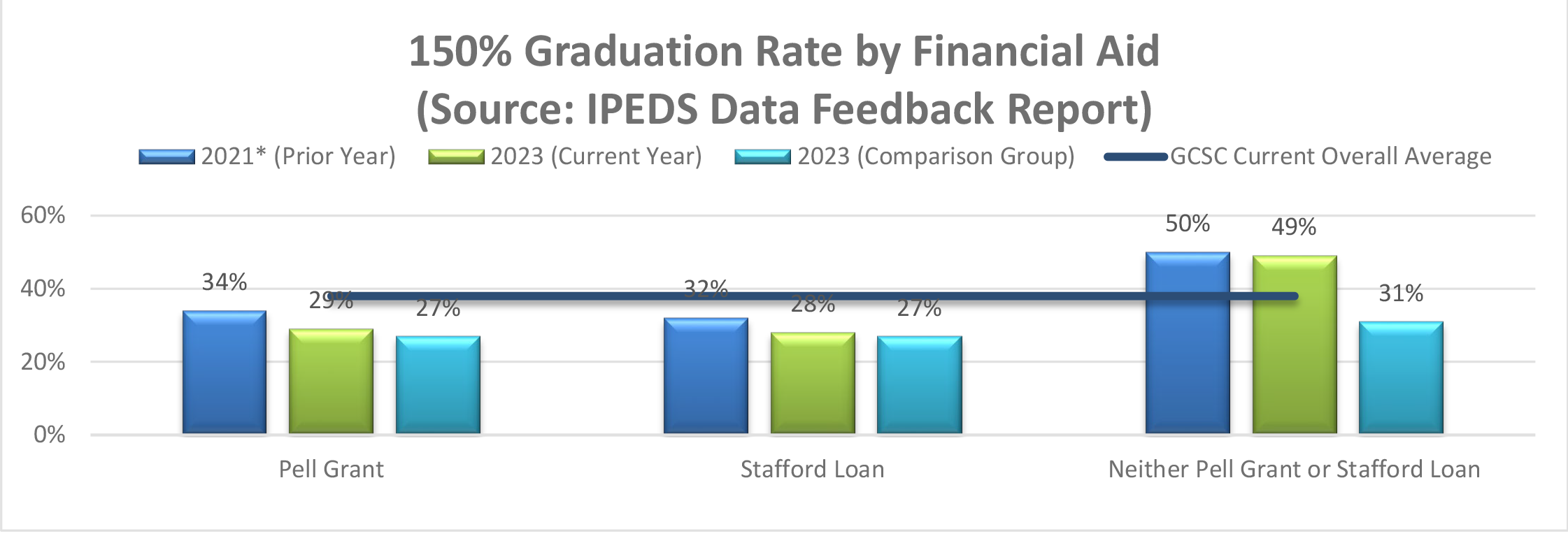
Note. IPEDS Data Feedback Report (January 2024). Source: U.S. Department of Education, National Center of Statistics, Integrated Postsecondary Education Data System (IPEDS); Winter 2022-23, Graduation Rates components. Current year: Fall 2016 cohort; Prior year: Fall 2014 cohort. *Fall 2015 cohort (2022 reporting year) is skipped due to data reporting issues. The comparison group is determined by IPEDS based on GCSC institution’s characteristics. The characteristics include degree-granting four-year, primary associate’s, Carnegie classification of Associate’s Dominant, public and enrollment of a similar size. The comparison group is comprised of 33 institutions.
Success Rate was calculated as the percentage of A, B, C or P grades. *Others is defined as courses that use an instructional method different from web-based or hybrid (This include: Lecture, labs, etc.). Incomplete and audit grades were removed.
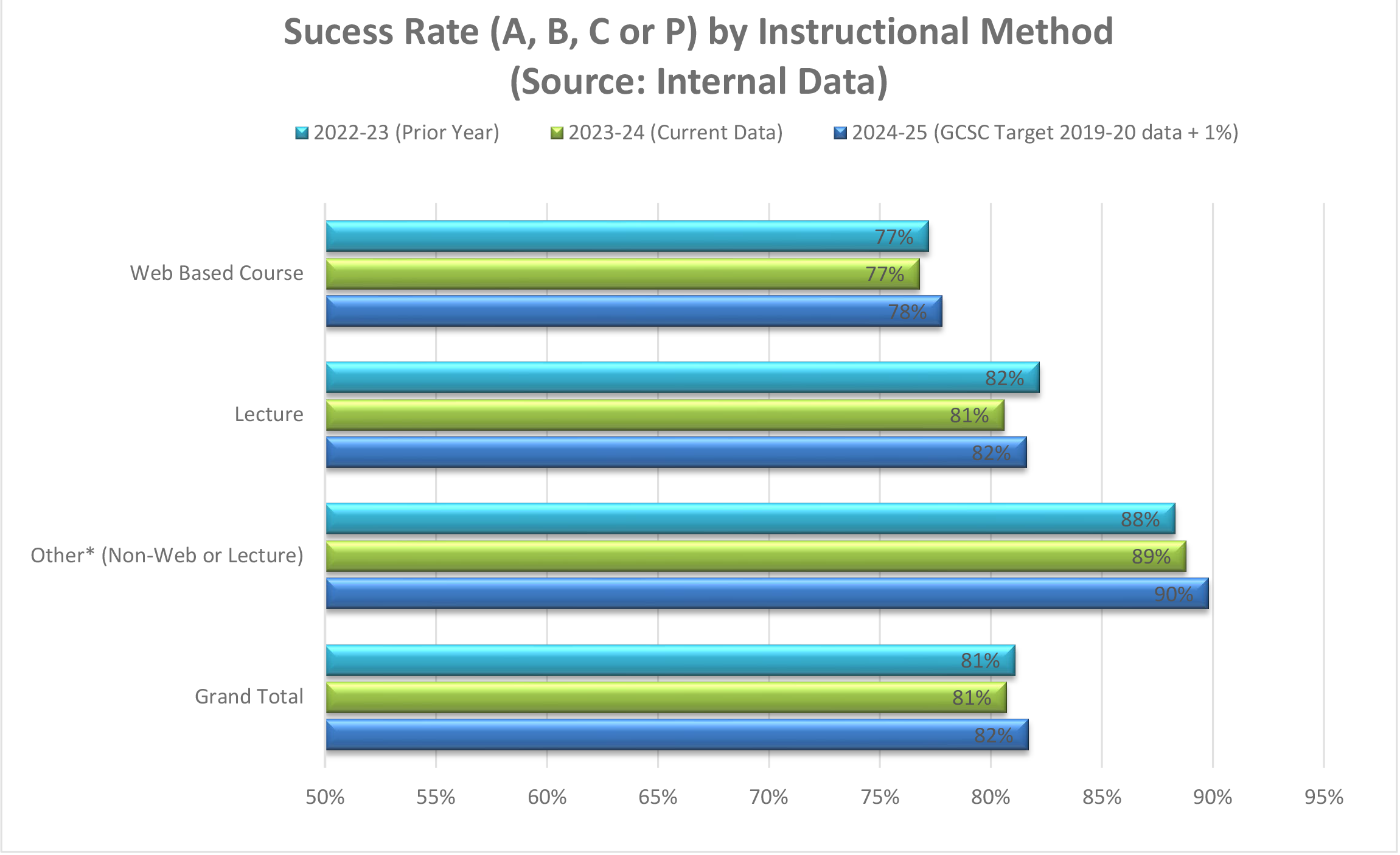
Graduate wages were calculated by utilizing a graduate’s highest wage for full-time employment from the four fiscal quarters the year following graduation. Includes out of state employment data through the Wage Record Interchange System 2 (WRIS2).
GOAL MET: YES
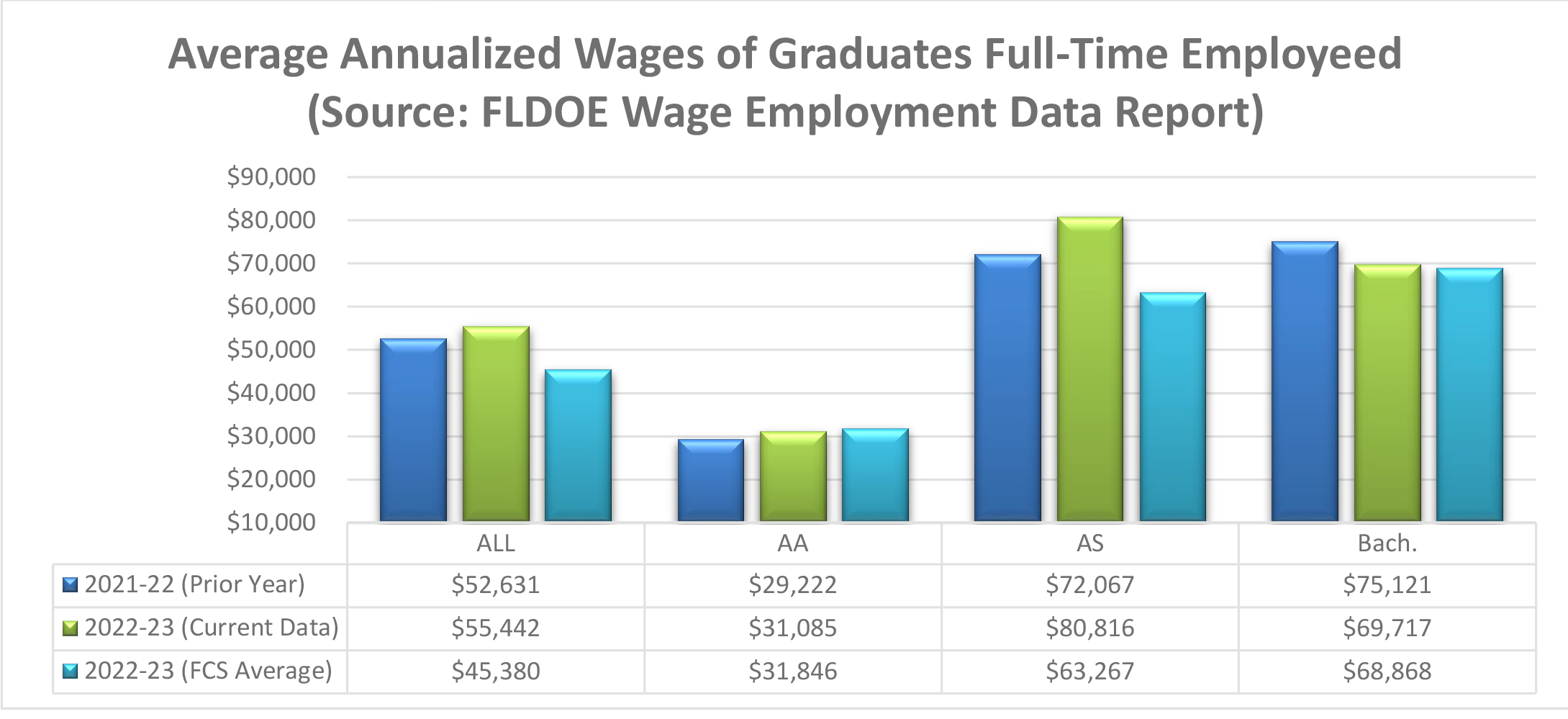
Note. Bachelor’s data fluctuates due to small sample size.
Continuing education or Employment rates were calculated by determining if any graduates during the year following graduation were employed or enrolled in a postsecondary institution at any time during the year. Includes out of state employment data through the Wage Record Interchange System 2 (WRIS2) and postsecondary education records through the National Student Clearinghouse.
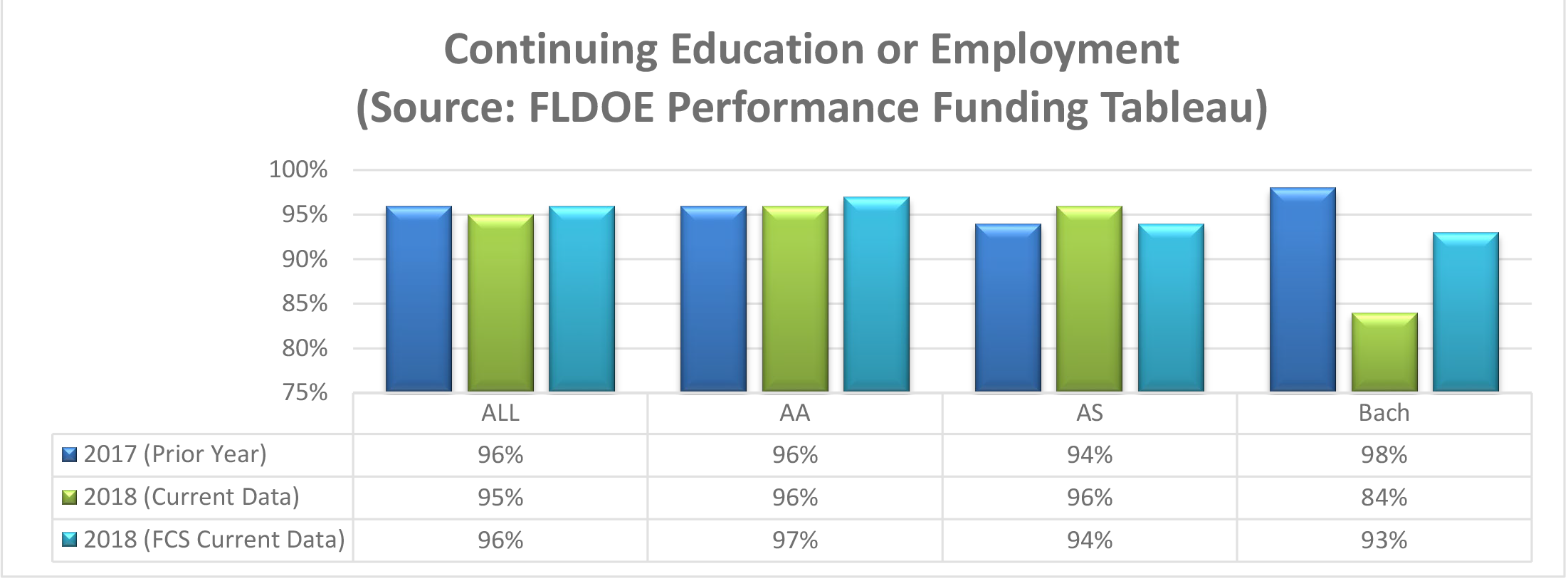
Note. Bachelor’s data fluctuates due to small sample size.
AA Graduates Performance at SUS, is calculated as the mean cumulative GPA in the SUS system.
Definitions:
- GCSC-AA is an upper division student in an SUS Institution who graduated with an Associate in Arts degree from Gulf Coast State College, entered the SUS institution and remained in the same SUS Institution.
- FCS-AA is an upper division student in an SUS Institution who graduated with an Associate in Arts degree from the Florida College System, entered the SUS institution and remained in the same SUS Institution.
GOAL MET: YES
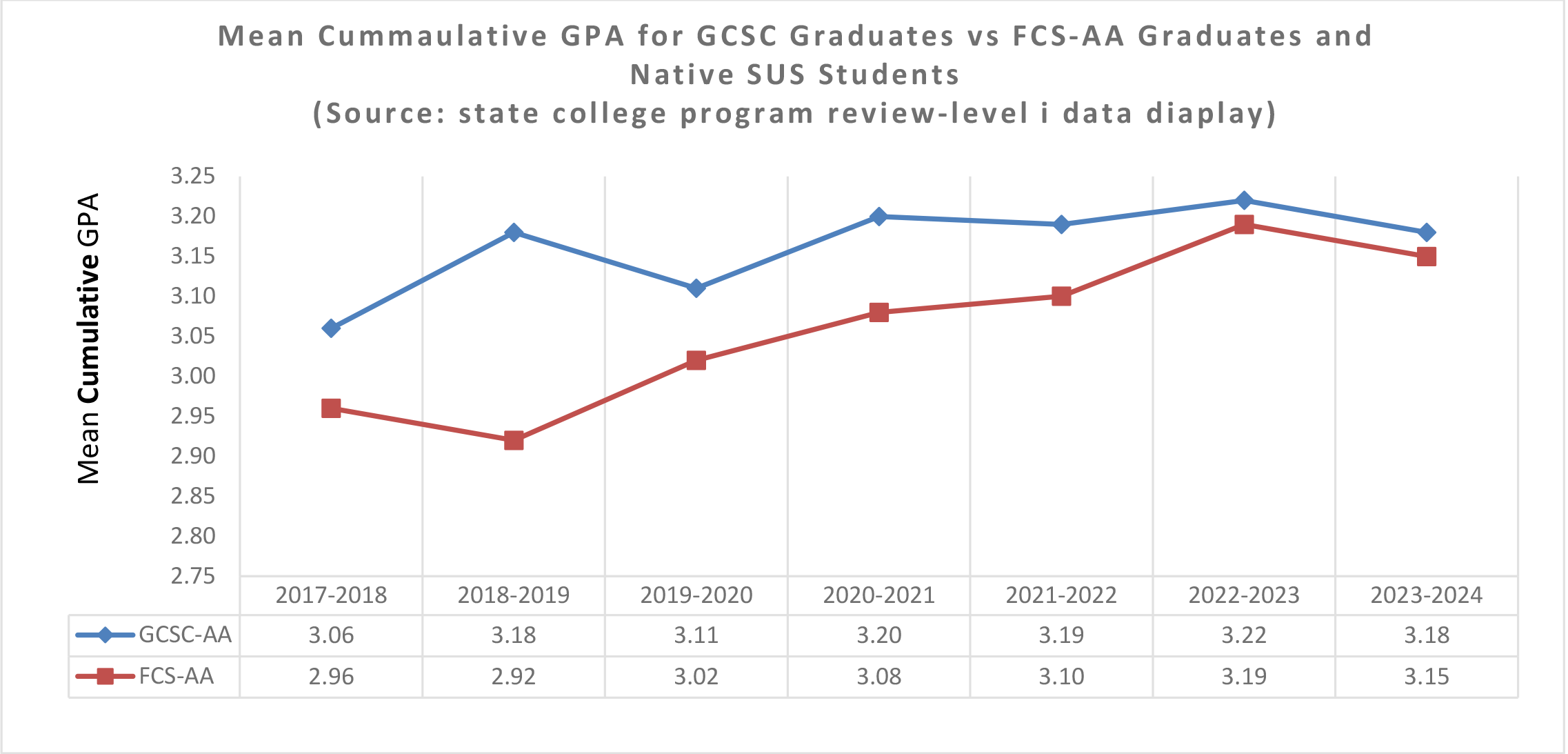
Gulf Coast State College Office of Institutional Research, report last updated on 02/10/2024.